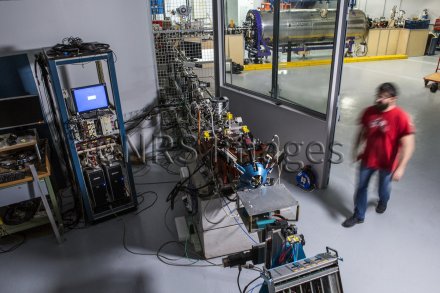Production year
2017

© Christophe HARGOUES / C2RMF / AGLAE / CNRS Images
20170130_0025
The AGLAÉ (Accélérateur Grand Louvre d'analyse élémentaire) particle accelerator in the basement of the Palais du Louvre in Paris. This analytical system is based on a Pelletron electrostatic accelerator operating at a maximum voltage of two million volts. AGLAE generates beams of accelerated ions (protons, deuterium nuclei and helium nuclei) that interact with the analysed object, producing X-rays, gamma rays and backscattered particles that yield information relating to its chemical composition and structure. To date, AGLAE is the only system of its kind anywhere in the world to be installed in a museum laboratory and devoted exclusively to the study of heritage artefacts. Its performance was upgraded in late 2017, to automate the beam line, optimise micron-scale chemical imaging and enable 24-hour analysis.
The use of media visible on the CNRS Images Platform can be granted on request. Any reproduction or representation is forbidden without prior authorization from CNRS Images (except for resources under Creative Commons license).
No modification of an image may be made without the prior consent of CNRS Images.
No use of an image for advertising purposes or distribution to a third party may be made without the prior agreement of CNRS Images.
For more information, please consult our general conditions
2017
Our work is guided by the way scientists question the world around them and we translate their research into images to help people to understand the world better and to awaken their curiosity and wonderment.